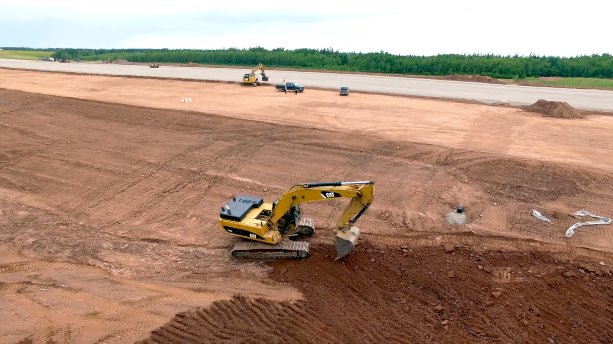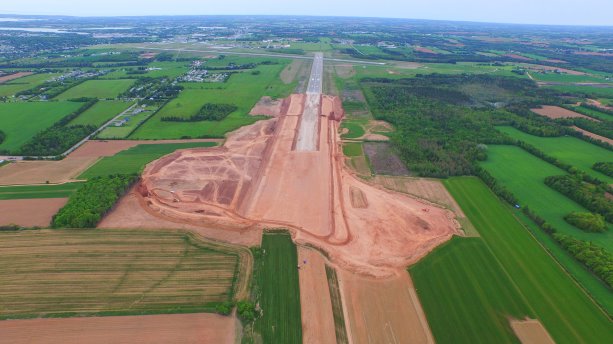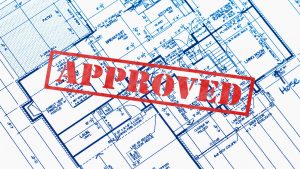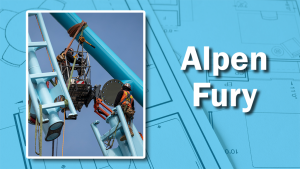Airport runways, like highways, look alike in that they are often both paved with asphalt. What lies below the surface is a different story.
To accommodate the wheel loads of a commercial airliner, an asphalt runway requires substantially more material and construction specifications are stringent.
A typical airfield consists of 100 to 150 mm of asphalt laid over 300 mm of granular base. Granular subbase material can be up to one metre thick, says Ian Rowbotham, senior project manager, WSP Canada Inc’s Aviation division.
WSP designed the specs for the recently completed 2,000-foot runway extension at Charlottetown Airport in P.E.I., bringing it to a length of 7,000 feet to accommodate the airport’s largest commercial aircrafts: the Airbus A321 and Boeing 737.
Rowbotham says the vertical alignment and surface smoothness of a runway must be more precise than a highway. Transfer the small bumps and uneven surfaces on a highway to a runway and an aircraft "may experience excessive vibration," that results in a loss of control or a plane becoming "prematurely airborne."
"We need especially well compacted pavements on stable subgrades that are not subject to significant long-term differential settlement."
For Chapman Brothers Construction Ltd., a Souris, P.E.I.-based contractor, the runway contract at Charlottetown Airport was a first.
"We are used to the hammer down highway work," says Craig Chapman, noting that Chapman Brothers has been paving roads and highways in Atlantic Canada since the early 1970s.
The runway contract was a different animal.
"Tolerances (grade, for example) for the airport were much closer," says Chapman. "The margin of error on any of our work had to be very small, minimal."
In 2016 the contractor employed seven articulated rock trucks to transport upwards of 60,000 tandem loads of fill or "borrow material" from a ravine to use for the runway. Additional granular material was shipped in from Newfoundland.
Subgrade material was done in two-foot lifts, vibrated, compacted and tested for approval, Chapman says. The lifts include about 600 mm each of gravel and premium borrow plus regular borrow.
The asphalt topping consists of a 60 mm base and a 40 mm seal, he adds.
Achieving that right design mix took several iterations, says Chapman.
Rowbotham says to meet friction specifications, the asphalt surface had to be designed for "slow moving heavy loads at high surface temperatures and remain flexible at low temperatures to prevent excessive cracking."
Another aspect to the design is the landscaped areas bordering the runway. The "runway end safety areas," for example, must be graded to support an aircraft that has overshot or undershot a runway without causing structural damage to the plane, says Rowbotham.
"We want to slow down the aircraft by allowing the wheels to sink into the soil but not enough to cause the nose gear to break."
Runway drainage can be a challenge because airfield pavements are "generally flat" with runway centres typically 1.5 per cent higher than edges. GPS and automatic grade controls are required on construction equipment, he says.
Another distinction between highway and runway construction is that the latter has to be kept meticulously clean. Lose material can be ingested into an airplane engine causing it to malfunction, says Rowbotham.
While the Charlottetown Airport’s runway extension was away from the airport’s main runway, the site has 30 to 40 hectares of dry soil which was sprayed down by a water truck "pretty much all the time," he adds. Traditional dust control methods employing calcium chloride were not an option because of their corrosive nature.
The runway extension is part of the Charlottetown Airport Authority’s three-year runway improvement program which includes the pavement and electrical rehabilitation of the airport’s main runway (7,000 feet-long) starting next year. WSP is preparing the detailed design which will be tendered in early 2018.
Rowbotham says while aircraft are smaller at Charlottetown Airport than at major airports like Pearson International in Toronto, design specifications are often similar — depending on soil conditions.
Construction sequencing, however, can be "a different animal" because security and increased air traffic can add complexity at a major airport.
"While they have multiple runways and taxiways…that still has an impact on their (a contractor’s) operation."












Recent Comments
comments for this post are closed